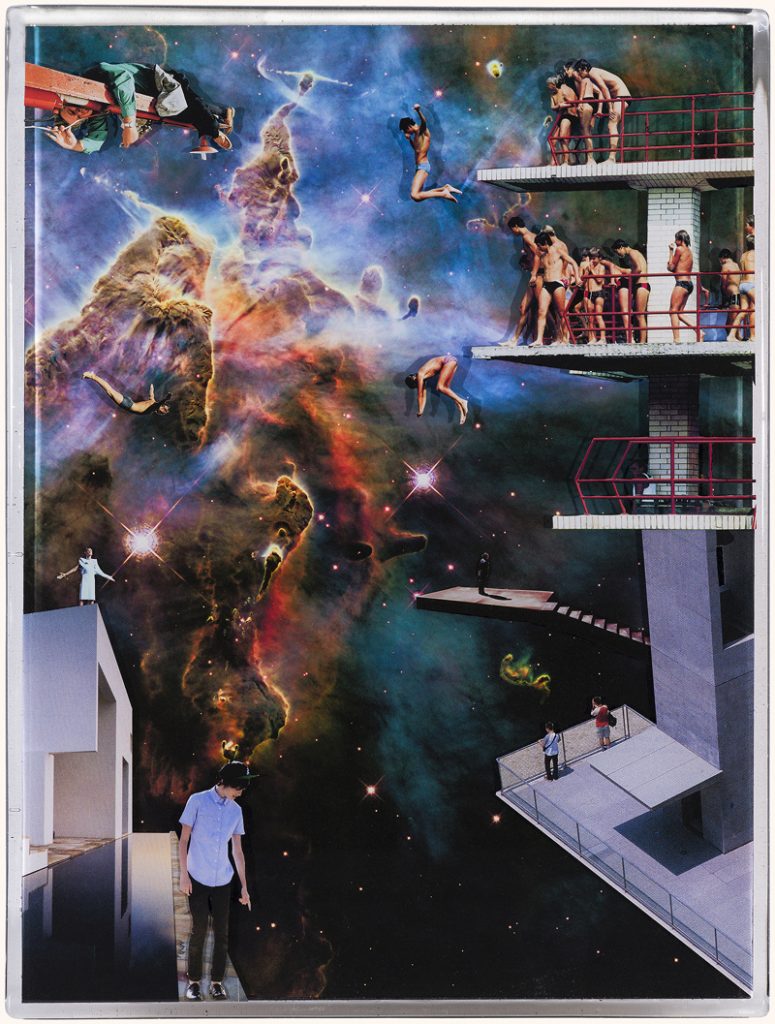Can chaos itself be used as a dojo for transformation? July 16, 2017 – Posted in: LaboratoryofVisionaryPlay – Tags: argentine tango, consciousness, daniel pinchbeck, mind-sturbation, nassim haramein, sacred sexuality, scienceofsexuality, spirituality, tantra, visionary play
Can the syntax of Language itself be expanded to facilitate the exchange of transmissions of body electricity?
Can chaos itself be used as a dojo for transformation?
As a professional dancer, I was obsessed with the state of flow. I experience it as the effortless state of consciousness in the body where everything is happening, yet I wasn’t consciously expending energy to *doing anything*. Muscle memory, skill, & practice spoke their own language with another body.

Artist – Sebastian Wahl
The feeling of my animal-self feeling and following its own intuitive wisdom, while being in connection with another was exhilarating.
The shadow of exploring this experience, i.e my animal-self overwhelming my consciousness, or my consciousness not holding enough presence for my animal-self requires it’s own post .
Spending time in energetically developed group fields, with other beings walking the path supported me to identify, and put words to the feeling of the experience of my animal-self overwhelming my consciousness.
The ability for my consciousness to witness, and hold space for my animal-self was a skill I needed to develop. Curiously, around the same time, my *dance* practice became increasingly solitary. This was paradoxical for a social-partner dance.
of form and field
Argentine Tango is a feeling that is danced
Amongst forms of Dance, including Classical Indian Dance & Rhythm Sacred Dance, a form of dance I’ve explored deeply is Argentine Tango, which embodies the idea of both form (of an improvised, continuously evolving individual & partner dance) and field (which is the milonga, the space or container where the dance happens, and also the group of people that a pair of dancers are always dancing with).
Argentine Tango is similar to a developed movement language, with grammar & vocabulary. However, the most exciting aspect of the dance is the infinite potential for improvisation. Even so called *errors* can be used as opportunities for creative improvisation.
At it’s heart, Argentine tango is a feeling, that is interpreted and danced between two people.
Feelings are emotions, biological, physical, chemical, electrical & energetic signals that are perceived and interpreted by our mind+body.
Lately, in group fields where developed energetic beings synchronistic-ally *ally* together, called by a purpose higher than themselves, & allow themselves the permission to play with each other con-sen(t)-(s)ually, I’ve experienced the energetic dance of form happening between multiple beings simultaneously on different levels, in a “field” of beings so-to-speak.
consent+sensually = con-sensual-ly?
We are energy beings. As we move through increasingly chaotic times on the physical plane, on the energetic plane, what I experience, & gather from science, Nassim Haramein -esque quantum physics, is that space-time itself is spiraling to a point of maximum density, like at the center of a Toroidal/Torus-shaped field. Time is speeding up, and things are happening faster.
And what’s a dojo?
The origin of the word “dojo” comes from the Sanskrit bodhimanda, which means the place of awakening. The Japanese kanji for Do is composed of two parts. One depicts a man walking on a road. The other is the human throat, which surrounds the jugular vein, representing the very core and pulse of our life. A man walking toward life. The Way is a theme of life. The dojo is a place where we awaken our body, grow the self, and unite with the spirit through rigorous and compassionate life-enquiry. “- Richard Strozzi-Heckler, Holding the Center – Sanctuary in a Time of Confusion
In Japanese, “dojo” refers to the place, a space of commitment where people practice together or train “in the way”. This is different from the conventional classroom where students sit passively taking notes , but points to the difference between academic knowledge and embodied knowledge that allows people to take actions that sustain and enhance their lives. In a place of learning like the dojo, students practice what is being taught and over time begin to embody the subject matter. It lives in the body, it is who they are. Using a dojo, we optimize our ability to hit flow states, especially when surrounded by uncertainty.
Chaos as a dojo for transformation
Language expanding its syntax to facilitate the exchange of transmissions of body electricity.
What I am enjoying is using this chaos, this dance between form and field in which life happens, as a dojo for transformation. Developing energetic mastery is becoming an essential life skill, like learning maths. Similar to mind-fullness, which is a relatively recent life skill to enter collective consciousness., unless you were born as a cute, little red-robed Buddhist monk-(ey).
Experiencing my quantum-being-ness not just as a mental concept, but also as an em-bodied experience supported me to shift my perception of what is happening on the physical plane. We are creative, conscious manifestors.
This *apparent* paradox/separation fascinated me growing up: of countries that are rich on the physical plane, seeming poorer on the spiritual plane, and sometimes, countries that are poorer on the physical plane seeming richer on the spiritual plane. Scratching deeper under layers, what I discovered was that the human condition is overwhelmingly, more similar than different in the west, or east. I have this romantic idea, inspired by Daniel Pinchbeck of humanity as a planetary spiritual super-orga-(ni)-sm in an intimate, symbiotic relationship with the earth’s eco-system. Planetary eco-sexuals in Rumi-speak.
of intimacy, of sexuality, being not only what we do in bed, but our creative aliveness.
Language expanding its syntax to facilitate the exchange of transmissions of body electricity.
– Bynoi Desouza, July, 2017
Acknowledgements
The dojo, its purpose and meaning – http://maaml.blogspot.se/2009/09/dojo-its-purpose-and-meaning.html